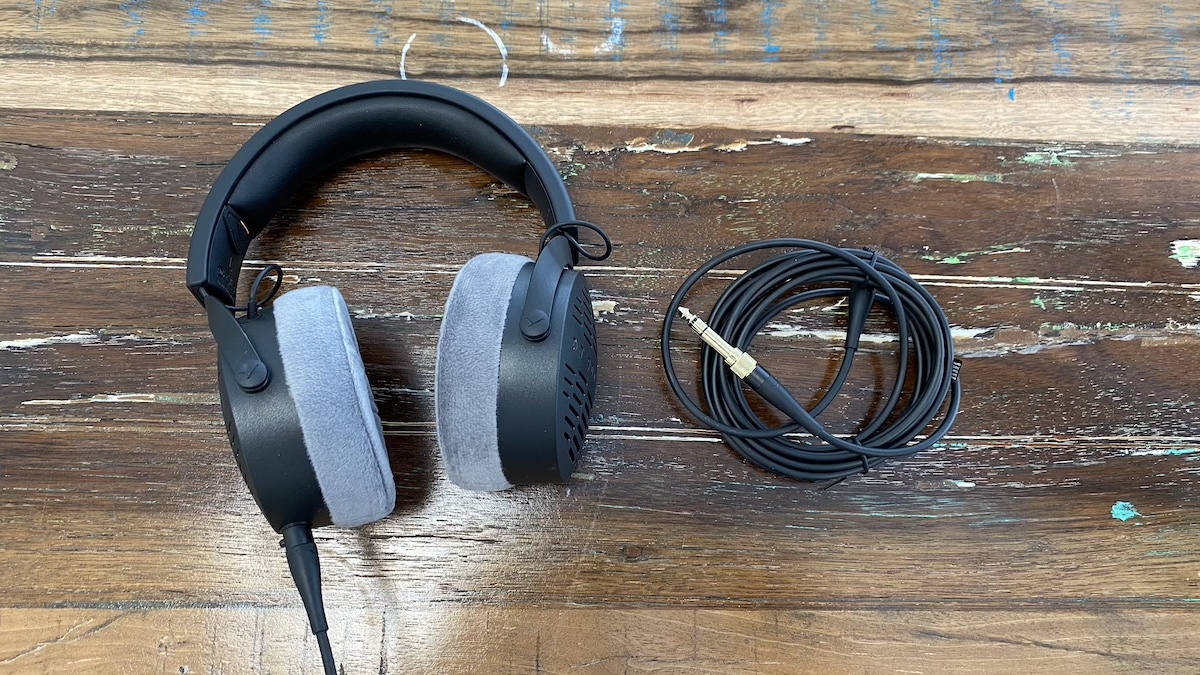MusicRadar Verdict
Building on the excellent reputation of the models that came before them, both the 700 PRO X and the 900 PRO X raise the reference headphone game to a whole new level. Whichever model you go for will ultimately depend on your preference for open or closed-back cans, but for each appropriate use case - recording and tracking on the 700’s and mixing and critical listening on the 900’s - the Beyerdynamic pedigree ensures you won’t go far wrong. While the DT 990 PRO was and continues to be an excellent choice for a mixing and reference headphone, it would seem that the DT 900 PRO X is even more so.
Pros
- +
Bulletproof build quality
- +
Extremely comfortable
- +
Neutral, natural sound
- +
Brilliant for mixing
Cons
- -
Not the best choice for tracking
- -
Not very portable
MusicRadar's got your back
Beyerdynamic DT 900 PRO X review: What is it?
The name Beyerdynamic stamped on a pair of headphones is always going to be an indicator that you’re onto a good thing, renowned as they are for their pioneering work in headphone development in general and for the professional studio headphone in particular. Having enjoyed great success with their existing PRO line, the company launched their new PRO X headphone range late in 2021 with two new models - the closed-back Beyerdynamic 700 PRO X and the open-back 900 PRO X, the subject of this review.
To avoid any confusion, we should stress at this point that the new PRO X models are not intended to be replacements for the existing PRO series, but instead to exist side by side with the older model range as more upmarket, advanced models. To that end, they feature an updated driver design, detachable cables, a sleeker, more modern look and one fixed impedance rating, making them suitable for a more diverse range of applications. These upgrades are reflected in the higher price point, coming in at roughly $100 more than the older PRO models.
As the open-back member of the squad, the DT 900 PRO X is Beyer’s suggestion as a weapon of choice for critical listening, mixing & mastering, intended to be a step up from the formidable DT 990 PRO in that regard. So how does the 900 PRO X measure up against both its less-expensive opposite number the 990 PRO and its closed-back stablemate the 700 PRO X?
Beyerdynamic DT 900 PRO X review: Performance & verdict
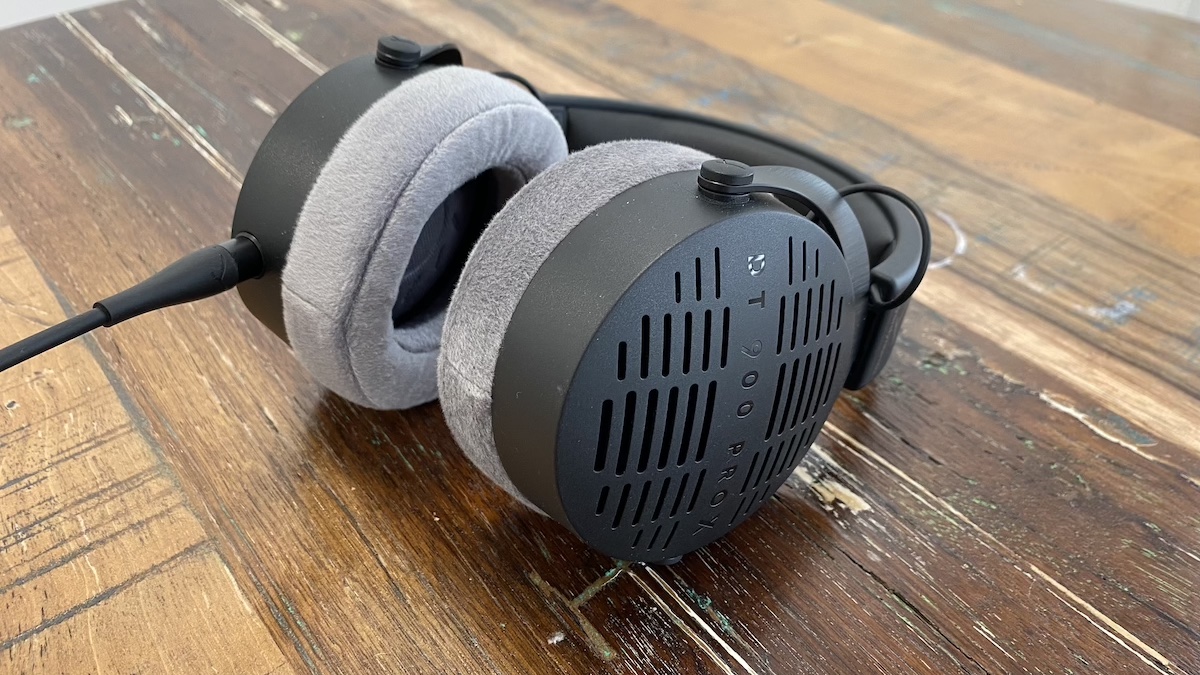
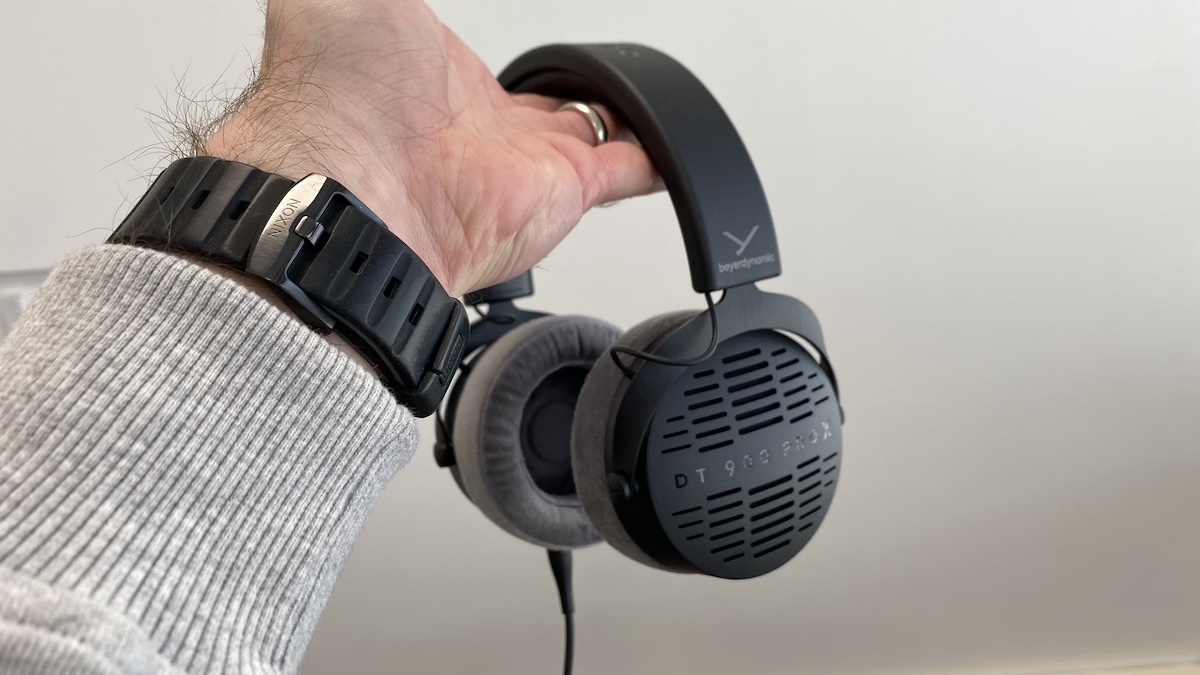
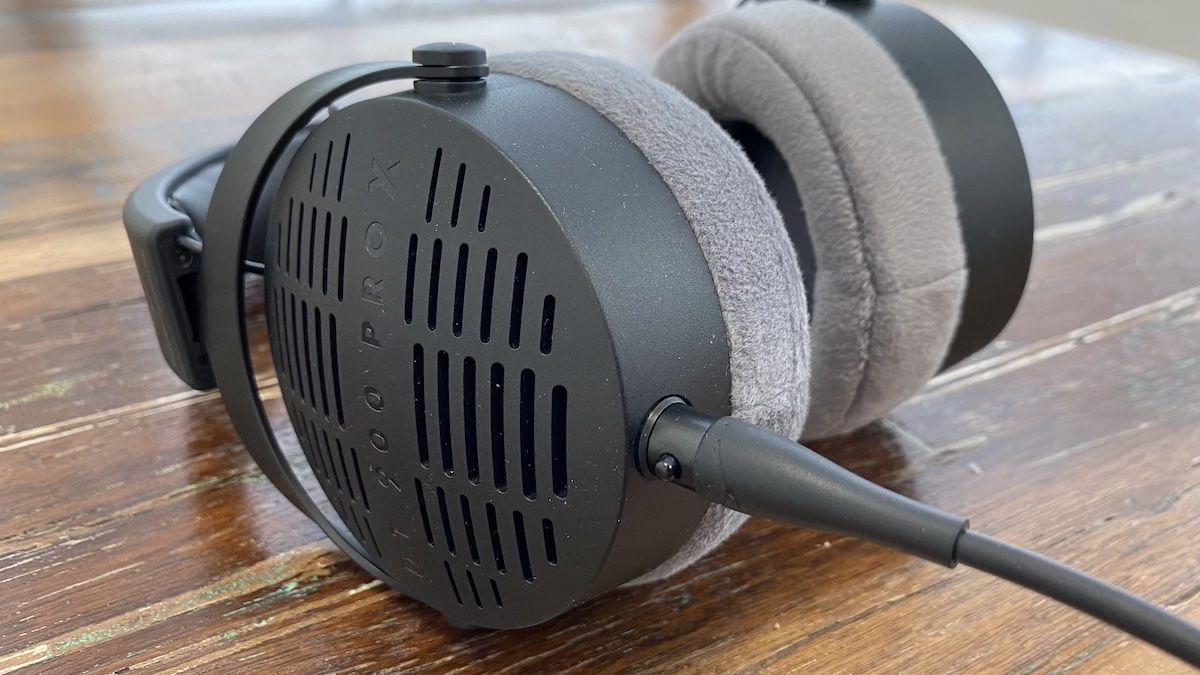

Open and shut case
The closed-back vs open-back headphone debate has raged on forever it seems, but really each design has its own set of strengths and weaknesses that makes them more or less suitable depending on what you want to use them for. Closed-back designs are more suited for tracking with recording microphones due to the reduced risk of headphone spill and they tend to have a more pronounced bass response due to the fully-enclosed drivers, making them popular for general music listening at home or on the go. Open-back designs meanwhile tend to be preferred for programming and mixing tasks due to their propensity for a more open sound and generally better stereo soundstage.
Physically, the only difference between the 900 PRO X and the 700 PRO X is the vented outer casing of the 900’s earcups. The materials and build quality are otherwise identical, but the 900 bears the telltale array of narrow slots that distinguish it as an open-back design. There’s the same extremely luxurious velour padding on the earcups that makes it feel like you’re on the receiving end of a cuddle from a friendly bear, and with it the same level of comfort that this brings to bear (sorry!). However, due to that vented casing, there’s not the same feeling of your ears being totally engulfed when you put the 900’s on. In contrast to the 990 PRO’s large number of vents, the 900 PRO X’s vent slots are fewer and further between, and the PRO X ships with straight cables rather than the coiled type provided with the 990 PRO.
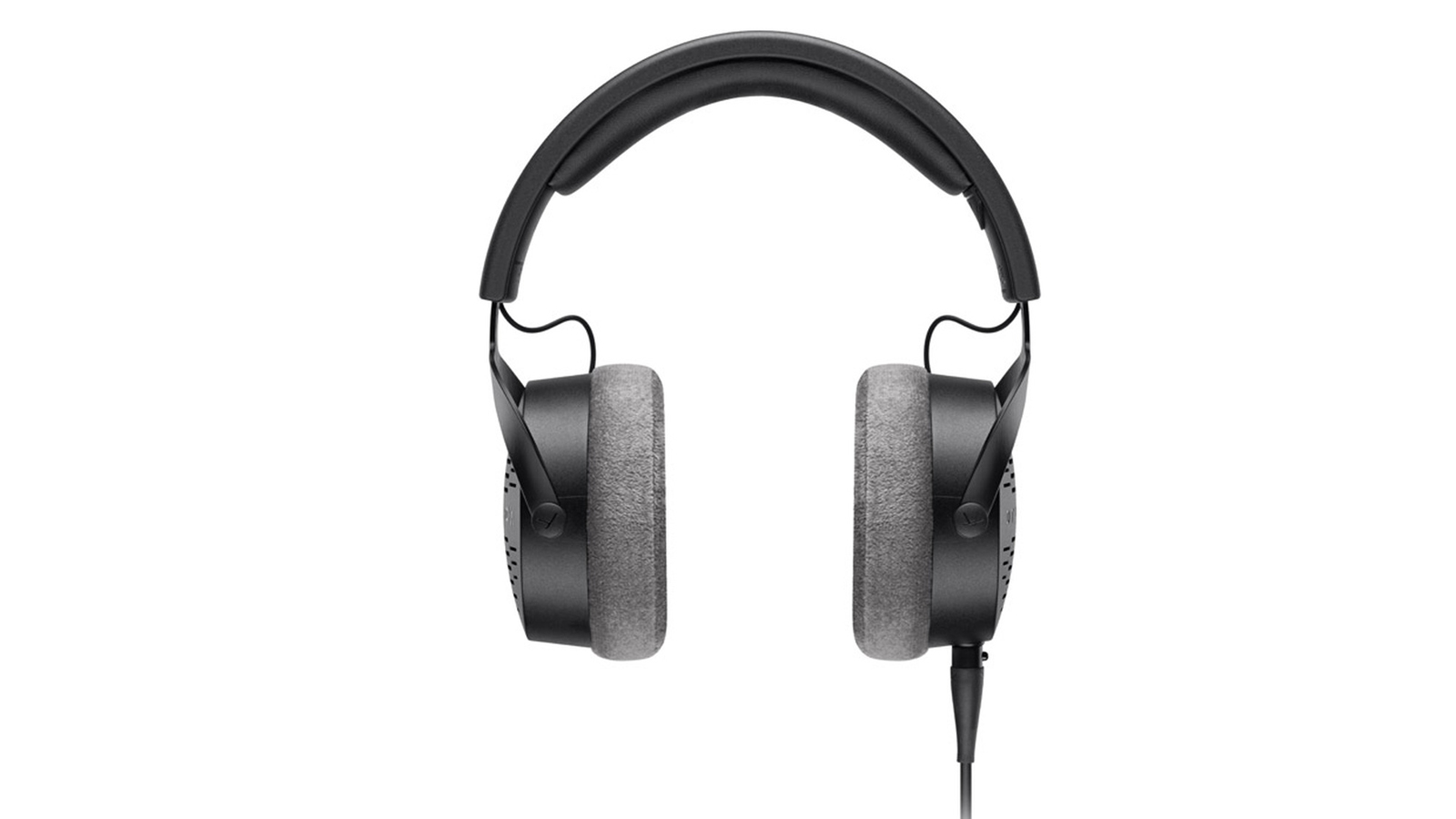
Comfort and joy
Thanks largely to all that luxurious padding, the 900’s are probably the most comfortable full-size cans we’ve tried, with the possible exception of the 700’s. You almost have to make a conscious effort to remember that you’re wearing them when the phone rings, for instance. Clamp strength is spot-on, delivering a perfect circumaural seal with negligible build up of pressure over time, and the ear cups have about 40 degrees of vertical rotation to accommodate varying head shapes.
Isolation from external noise is not the greatest, as you’d expect from open-back cans, since this is not one of the inherent strengths of that type of headphone design. If you’re after something to listen to music on while out and about, the closed-back 700 PRO X model would be the better of the two, as it performs much better at keeping out background chatter. With the 900’s, not only does ambient sound leak in from outside, but everyone around you will be aware of what you’re listening to, prompting varied reactions depending on whether or not your fellow passengers are into the same guilty pleasures as you are.
Want all the hottest music and gear news, reviews, deals, features and more, direct to your inbox? Sign up here.

Aside from the casing design, both the 700 and the 900 PRO X have the exact same spec when it comes to transducer design. Beyer’s new STELLAR.45 transducer design delivers a sound that’s punchy and vibrant without being over-pronounced at either end of the spectrum. The 48 ohm impedance lends them the versatility required to be loud enough when plugged into mobile devices as well as audio interfaces and studio headphone amps, so the 900 PRO X is noticeably louder than the 990 PRO.
The similarities between the two new models don’t end there. Like the 700 PRO X, you’ll find a glossy black drawstring pouch in the box, together with two detachable cables 1.8 and 3m in length. Each cable has Beyer’s proprietary miniature three-pin XLR connector at the headphone end and a 6.3mm stereo jack that unscrews to convert to a standard 3.5mm at the other.
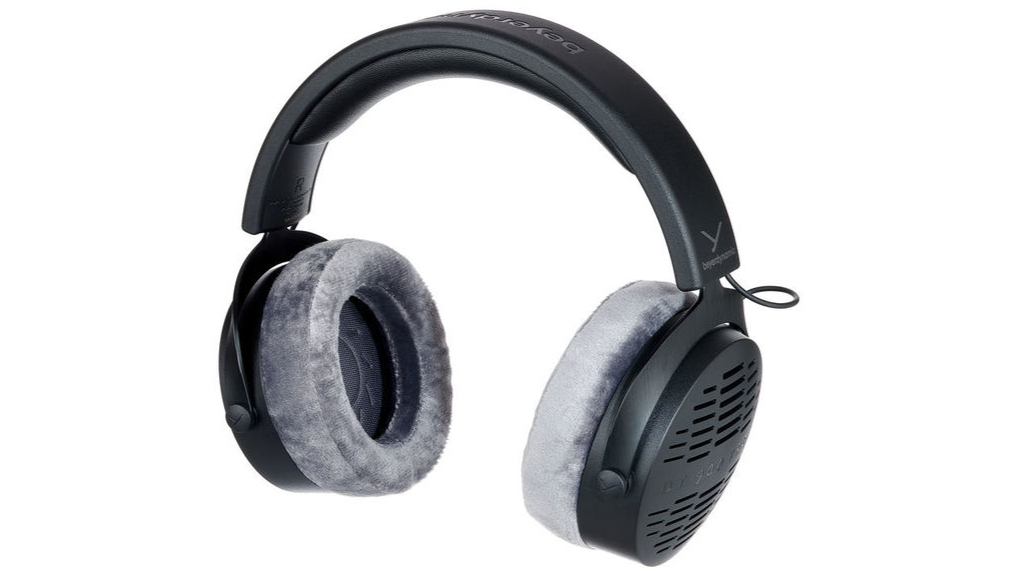
Sound investment
Sound-wise, the 900 PRO X shares the same flattish profile as the 700 delivering each frequency range without bias or favour. There’s no flattering bass boost or overly sizzling highs, but instead your ears will be privy to a refreshingly accurate portrayal of what’s actually there. This is, of course, exactly what you want from something that’s marketed as a studio reference monitor headphone, and the 900’s tick all the boxes. They definitely won’t flatter a mediocre recording, but they will do an excellent job of revealing any issues in your own projects, quick to shine a light on any problem areas that may need attention.
Listening to pre-recorded material on these - at least in a relatively quiet environment - can be a joy, as previously unheard details leap to the fore, waving for your attention. You’ll be able to suddenly pick out parts previously buried within the mixes of your favourite tracks that you didn’t even know were there, and in some cases even figure out what those lyrics really are you’ve always wondered about. The soundstage is as natural and wide as you’d expect from open-backs, delivering an added degree of airiness that you don’t really get from the fully-enclosed 700 PRO X.
Overall, the upfront, detailed yet unflattering character of their sound is very similar to the 700’s, which is no real surprise since they share the same STELLAR.45 driver technology and identical internal specifications, the only real difference being the enclosure design type itself. When driven by the headphone jack of our MacBook Pro, those new transducers, with their three-layer speaker diaphragm and integrated damping layer definitely deliver a punchier sound than the older 990 PRO, although the stark difference in volume level may well be more down to the 900 PRO X’s lower impedance of 48Ω compared to the 250Ω rating of the 990 PRO’s we compared them against.
Beyerdynamic DT 900 PRO X review: Hands-on demos
Beyerdynamic
Wheezy Tech
Beyerdynamic DT 900 PRO X review: Specification
- Frequency Response: 5Hz - 40kHz
- Impedance: 48Ω
- Weight: 345g
- Contact: Beyerdynamic
Dave has been making music with computers since 1988 and his engineering, programming and keyboard-playing has featured on recordings by artists including George Michael, Kylie and Gary Barlow. A music technology writer since 2007, he’s Computer Music’s long-serving songwriting and music theory columnist, iCreate magazine’s resident Logic Pro expert and a regular contributor to MusicRadar and Attack Magazine. He also lectures on synthesis at Leeds Conservatoire of Music and is the author of Avid Pro Tools Basics.
